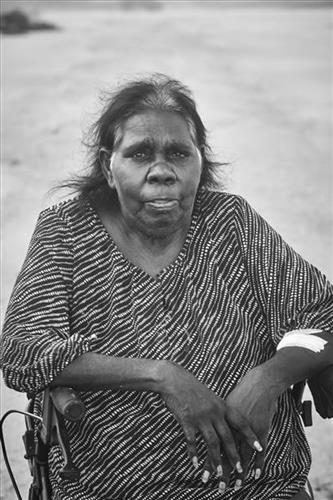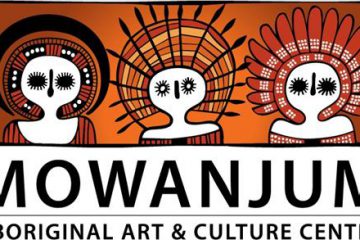225482201272
Wandjina, Crocodile (coi coi), Longneck Turtle (woolamarra), Fish (jaiya), Snake (ungud) & Dumbi (owl).
The Wandjina spirits are highly respected by the Worrora, Ngarinyin and Wunumbul people who live at Mowanjum and up the Gibb River Road to Kalumburru in the North West Kimberley region of Western Australia. We believe that the Wandjinas brought the law, culture and language to the people.
The Wandjina is our identity. The Wandjina gave the Law, Culture and Language to the people to abide by. These customs are carried on today.
Where you see a lot of Wandjinas they represent the laws of tree, rivers, rocks, bush fruit and animals, all creation. The Wandjinas give the law on how we have to treat and use these creations
The words Coi Coi are Wororra for saltwater crocodile. In this painting the artist has demonstrated the between the Wandjina and the Saltwater crocodile.“These Woolamarra (long neck turtles) are having a rough time because their waterhole has dried up. The Woolamarra have sung out to the Wandjina to help them find a new waterhole. Two Wandjinas, Datbudder and Djangunardi, have come to show the turtles how to get to the new waterhole.
The Ungud Snake is the one that made the rivers and holds water. If they are disturbed then he will kill whoever disturbs him.
Dumbi is an owl which resides in Ngarinyin country. A boy and a girl teased Dumbi and plucked out his feathers. Dumbi flew to the Wandjina Wodjin who said he would create a large flood to punish the tribe from where the boy and girl came. At a place called Wanalirri, the Wandjina gathered a large flock of brolgas which stomped on a huge black soil plain to create quicksand. The flood came and drowned many people; those who tried to escape were lost in the quicksand. The boy and girl were safe because they were on high ground, they were taken there by a kangaroo, and they travelled on the kangaroo’s tail. A Tata lizard called Gunarda warned the Wandjina that the boy and the girl had escaped. The rains and lightening started to chase the boy and girl and they ran to a hollowed out boab tree. Once they were in the tree, the Wandjina closed it up and they were lost for ever. In another version of the story the boy and girl survive the flood and mate to produce a new tribe.




